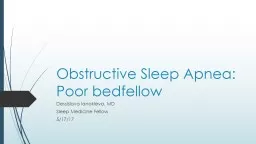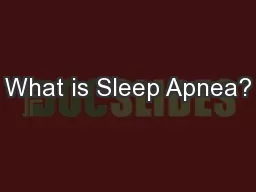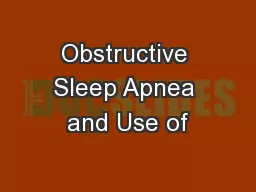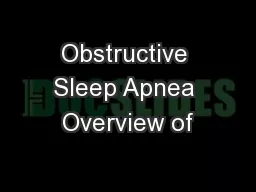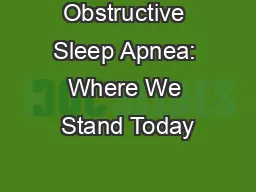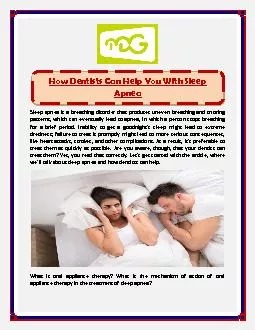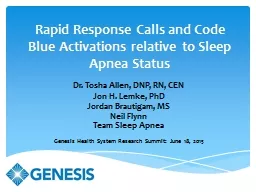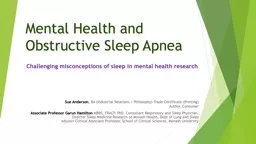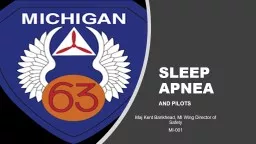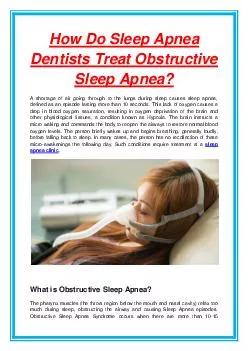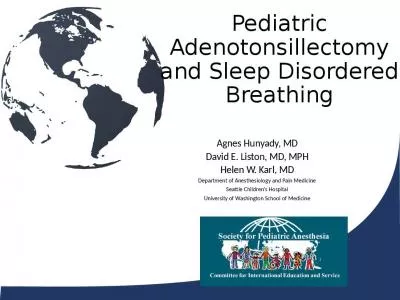PPT-Obstructive Sleep Apnea:
Author : pasty-toler | Published Date : 2018-01-21
Poor bedfellow Dessislava Ianakieva MD Sleep Medicine Fellow 51717 Objectives Understand the mechanism of sleep apnea Know factors that increase the incidence
Presentation Embed Code
Download Presentation
Download Presentation The PPT/PDF document "Obstructive Sleep Apnea:" is the property of its rightful owner. Permission is granted to download and print the materials on this website for personal, non-commercial use only, and to display it on your personal computer provided you do not modify the materials and that you retain all copyright notices contained in the materials. By downloading content from our website, you accept the terms of this agreement.
Obstructive Sleep Apnea:: Transcript
Download Rules Of Document
"Obstructive Sleep Apnea:"The content belongs to its owner. You may download and print it for personal use, without modification, and keep all copyright notices. By downloading, you agree to these terms.
Related Documents

